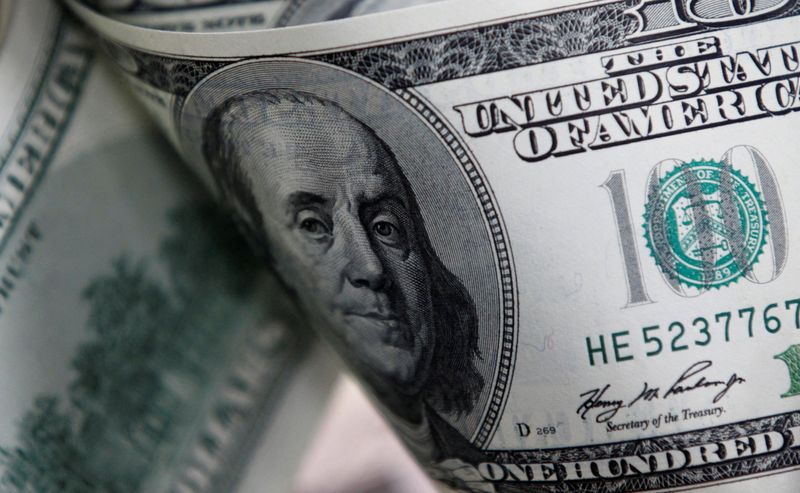By John McCrank
NEW YORK (Reuters) - The dollar gained against the yen, the euro and the pound on Monday after data showed that U.S. services industry activity unexpectedly picked up in November, prompting speculation the Federal Reserve may lift interest rates more than recently projected.
The Institute for Supply Management (ISM) said its non-manufacturing PMI increased to 56.5 last month from 54.4 in October, indicating that the services sector, which accounts for more than two-thirds of U.S. economic activity, remained resilient in the face of rising interest rates. Economists polled by Reuters had forecast the non-manufacturing PMI slipping to 53.1.
The survey followed on the heels of stronger-than-expected job and wage growth data for November released last Friday. Consumer spending also accelerated in October.
The upbeat reports have raised optimism the economy could avoid recession next year, with growth just slowing sharply, while also spurring speculation about how high rates will rise.
"The ISM services PMI data highlighted a U.S. economy that's still showing some strength, despite tighter financial conditions," said Priscilla Thiagamoorthy, an economist at BMO Capital Markets. "While that's good news for the growth outlook, it's not so great for the Fed trying to dampen demand and ease inflation."
Fed Chair Jerome Powell said last week the U.S. central bank could scale back the pace of its rate increases "as soon as December."
The dollar climbed 1.68% against the yen to 136.615 yen, bouncing from Friday's three-and-a-half month low of 133.62, while sterling, which had risen to a more than five-month high of $1.2345 in Asian trade Monday, was down 0.94% at $1.2178 at 2:15 p.m. EST (1915 GMT).
The euro slid 0.42% to $1.0494, having earlier climbed to $1.0585, its highest level since June 28.
The dollar index, which tracks the greenback against six peers, fell 1.4% last week, and 5% in November, its worst month since 2010.
But now speculation is growing that the Fed 'pivot' narrative has run its course.
"I think this issue about 'peak inflation, peak rates, peak dollar' - I think - is slowly turning into a 'persistence of inflation, a persistence of higher-for-longer interest rates," said Jane Foley, senior FX strategist at Rabobank.
The dollar's aggregate positioning against G10 currencies is now neutral, and at the lowest levels since August 2021, according to ING calculations based on CFTC data.
ING also believes that dollar softening may have run its course for now, given the possibility of the Fed maintaining its hawkish narrative for longer, that relaxing China's COVID restrictions could prove complicated, and that oil and gas prices could rise again.

The other major factor for markets on Monday was China, where several cities have been easing their COVID restrictions. Official messaging about how dangerous the virus is also has changed following recent, unprecedented protests against the government's uncompromising "dynamic zero-COVID" strategy.
This boosted China's yuan, and the dollar fell below 7.0 yuan in offshore trade for the first time since mid September, and was last at 6.9767.